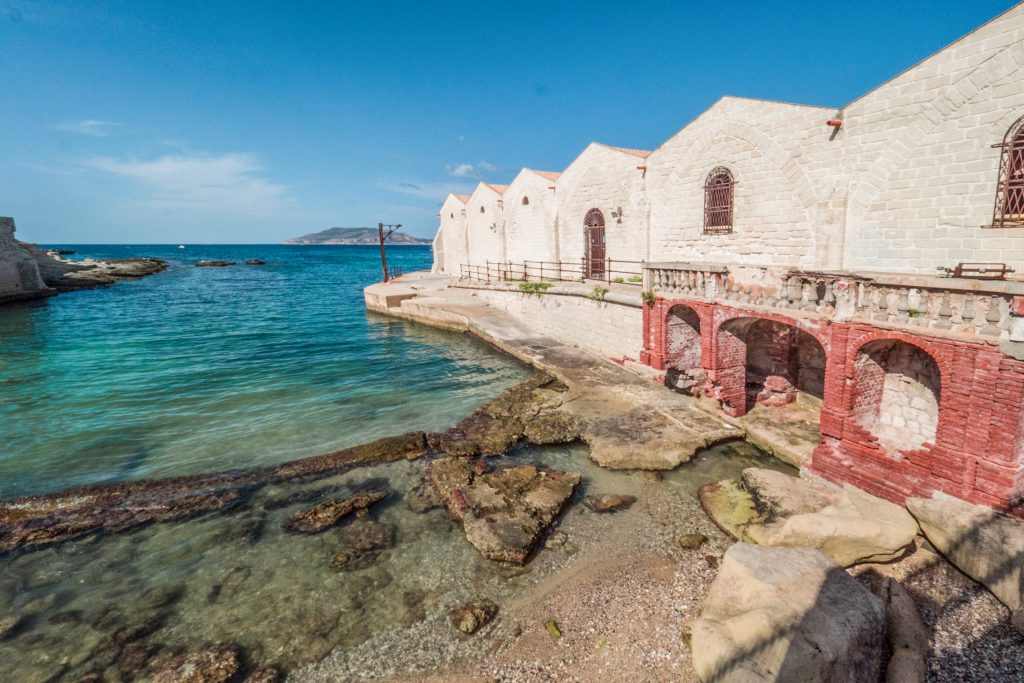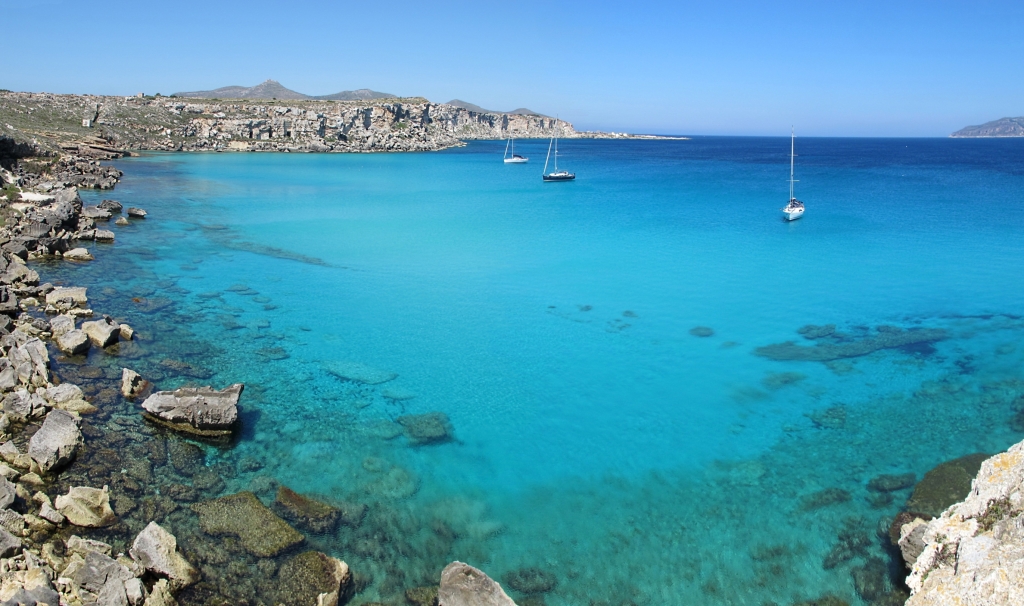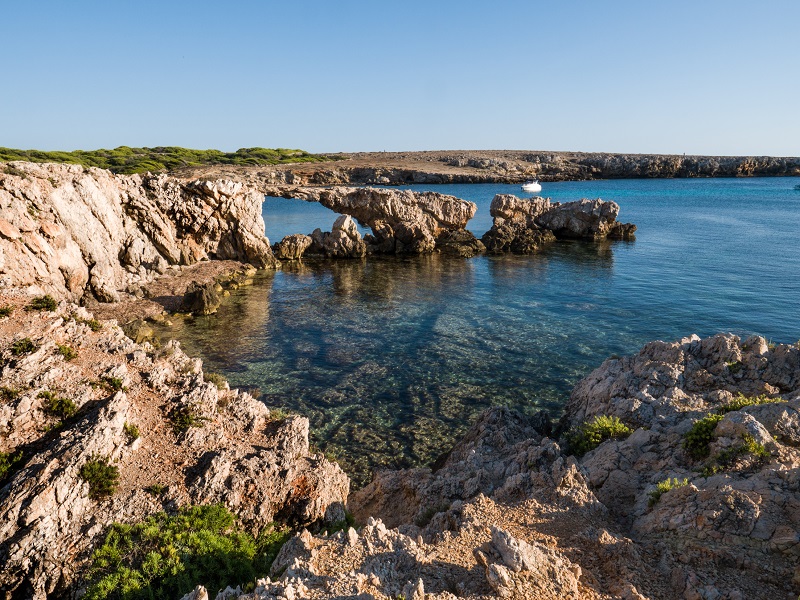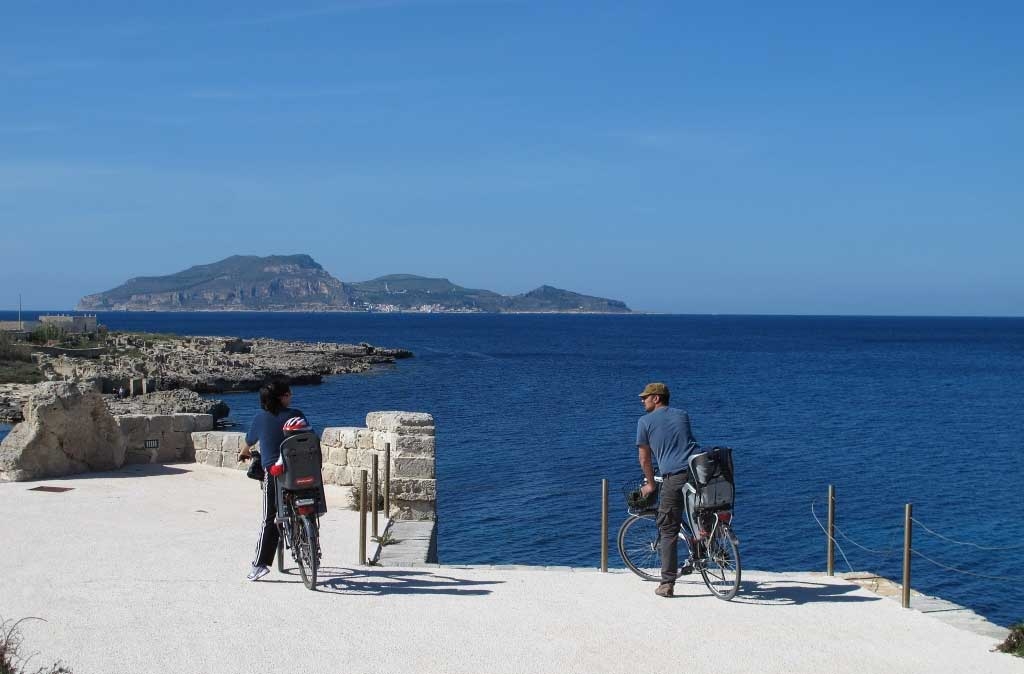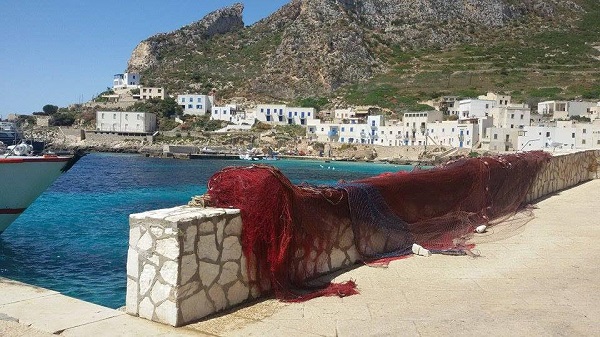The Egadi Archipelago, formed by the islands of Favignana, Levanzo and Marettimo and the islets of Formica and Maraone, is an extraordinary synthesis of history and nature .
Many terrestrial and underwater archaeological finds, dated back to the Paleolithic era, testify the permanence of people coming from every corner of the Mediterranean, who contributed to the history of the Western world.
Let’s visit the archipelago in 10 steps!
- Former Florio factory of the Tonnare di Favignana and Formica
For Favignana the slaughter is not just tuna fishing. It is a ritual that has lasted for centuries and has marked the social and economic identity of the whole island.
Here stood the largest tonnara in the Mediterranean, one of the “outward” traps in Sicily. With the Florio family, Favignana experienced a period of great development: just Ignazio Florio established his residence in the building that takes its name, and bought the plant which in a few years became one of the largest food industrial complexes in the world, at the forefront. for the conservation and canning of tuna.
Today the Florio factory has become the largest Sea Museum in Europe, able to tell the recent past of Favignana and the Egadi islands. Among the finds from various eras let us dwell on the pilgrim’s flask of the fifteenth century. containing wine and amphorae from various eras.
- Discover Favignana by bicycle
The best way to get around in Favignana is by bike! We will do it without difficulty, precisely because the island is quite flat and consists largely of tufaceous rock, used for construction. Along the paths there are deep caves, partly dug by man, partly caused by the sinking of the friable rock, surrounded and covered by low bushes.
- The Favignana quarries and the underground gardens
Along with fishing, the other historical activity underlying the economy of the island of Favignana has always been the extraction of limestone, a material used in construction and widespread throughout Western Sicily. The same Cathedral of Monreale, a UNESCO heritage site, was almost entirely built with the Favignanese “tufo”.
The tufo quarries are real works of art: the singular geometries of columns and galleries look like grandiose cathedrals dug by the skilled hands of masters in the extraction of tuff, the pirriaturi.
We can find quarries that have now fallen into disuse even in the historic center, but converted into vegetable gardens and orchards! Thanks to the “green” reconversion, the inhabitants of the island have thus transformed these decaying sites into underground gardens, today attractions of great naturalistic interest and characteristics of the island.
- Ravines, coves and caves in Favignana
Favignana is an extraordinary summer destination, with its coasts full of ravines, coves and caves lapped by a turquoise and clear sea with splendid reflections.
How to resist a dip?
Cala Rossa is a very suggestive place, only rocks and very blue sea, a real natural swimming pool. Less suitable for children due to the difficulty of access and entry into the water. The effort spent to get there will soon be forgotten.
The Grotte del Bue marino, near Cala Rossa, can be reached by diving after climbing among the tuff stones. The water is very fresh, the vegetation is wild, the colors range from deep blue to almost white light blue: a marvel!
Cala Azzurra is a beautiful and wild beach, with fine sand, very suitable for children. It is best to keep a snorkel mask and protective cream always at hand.
Lido Burrone is suitable for families with children, you can enter the water without difficulty and the water is blue and not high.
At Scalo Cavallo, rocks and stones with deep water await us right from the start: it is an ideal place for snorkeling.
Cala del Pozzo and Punta Sottile, as well as wonderful views of the sea, will give us unforgettable sunsets.
- The castle of Santa Caterina
At the top of Mount Santa Caterina you can see the profile of the Castle which was originally part of a triptych of watchtowers built by the Saracens at the time of their domination on Favignana. This explains why the island’s banner bears three towers and a bird of prey.
The Favignana Castle has witnessed the various dominations that have alternated on the island and the rest of Sicily. Today the superb panorama remains, which is why the demanding climb is the right price to pay. Once up there, we will be able to immortalize the best postcard of Favignana.
- Levanzo: dream beaches
The smallest and most precious of the Egadi islands, with its white houses nestled on the port, looks like a nativity scene. An uncontaminated sea surrounds the island of Levanzo, where we will find dream beaches.
On the eastern side, a few steps from the town, there is Cala Fredda, with a small beach of clear and smooth pebbles; not far from Cala Minnola, close to a pine forest with a slide into the sea and a beach. On the opposite side, a path leads to the Caletta del Faraglione, listed by Legambiente among the twenty most beautiful beaches in Italy. On the other side is Cala Tramontana, where you can enjoy the sunset in silence.
- At the bottom of the sea… The underwater treasures of Levanzo
Are you passionate about diving? Levanzo offers you a very interesting underwater archaeological itinerary!
Between Cala Minnola and Punta Altarella, about 27 meters deep, there are the remains of a Roman shipwreck, wine amphorae and fragments of black-painted ceramic pottery dating back to the 1st century BC. C.
And again, rock figures of men and animals, painted in graffiti on the walls of the Grotta del Genovese, take us back to the Paleolithic, with its dark rituals, wild and mysterious life. The cave is among the most interesting prehistoric sites in the world.
- Marettimo… or the real Ithaca?
Marettimo is the farthest, highest and most rocky of the Egadi Islands, with its only fishing village made up of small houses close to each other and an everyday life that exudes peace and serenity. It is also the most “island” of the Egadi Islands, because it broke away from the mainland several millennia before the other two islands of the archipelago. But of the Egadi Islands, it is also the most famous island of all time.
According to some theories, the ancient Hierà Nésos, “Sacred Island”, could coincide with Ithaca, the legendary homeland of Ulysses. The geographical description provided by Homer in the Odyssey would leave no doubt.
Whether this is true or not, Marettimo is certainly the Ithaca of Sicily, the island coveted by all those who need to find themselves.
- Trekking in Marettimo
This silent and peaceful island, in addition to wonderful days at the sea, will give us walks along the paths bordered by bursting and uncontaminated vegetation.
For trekking lovers, Marettimo is a true paradise: several very amusing paths wind through the town. There are many possible excursions in which to venture out to discover the island’s points of interest.
We reach Punta Troia, where the Norman castle of the same name towers, now restored and used as a prison museum and observatory of the Aegadian Islands Marine Protected Area.
We visit the Roman Houses, where there are the remains of a large building dated between the 1st and 2nd centuries AD. along with a small Byzantine church.
The Punta Libeccio lighthouse is a place populated by legends.
Let’s head to the Semaphore, a panoramic point from where you can see the infinite profile of the Mediterranean horizon.
The paths climb up to reach Pizzo Falcone, which majestically stands out at about 700 meters from the sea where, among rare and fragrant plants, you can admire the peregrine falcon circling.
- Hunting … for “natural” emotions
This is the largest Marine Protected Area in Europe, where large posidonia meadows, like a large submerged tropical forest, constitute a precious habitat for the reproduction of numerous fish species. Bottlenose dolphin (coastal dolphin), sperm whale, various species of sharks and manta rays.
We find a great variety of sedentary and migratory birds, extraordinary cetaceans, Caretta Caretta sea turtles and the very rare Monk Seal.
In Marettimo, before getting off the hydrofoil, all we need to do is throw a glance towards the mountain to see entire families of mouflons, a very ancient fauna species, characterized by large spiral horns.

